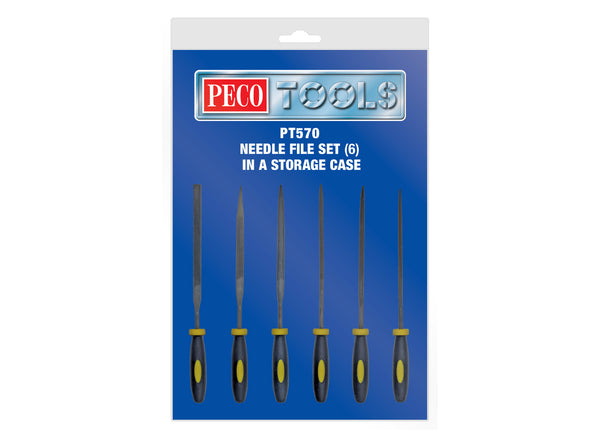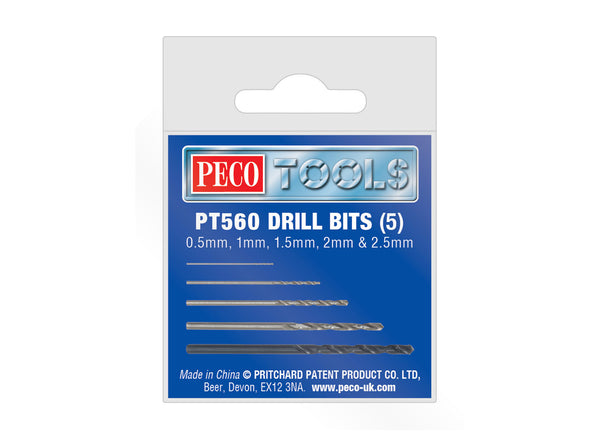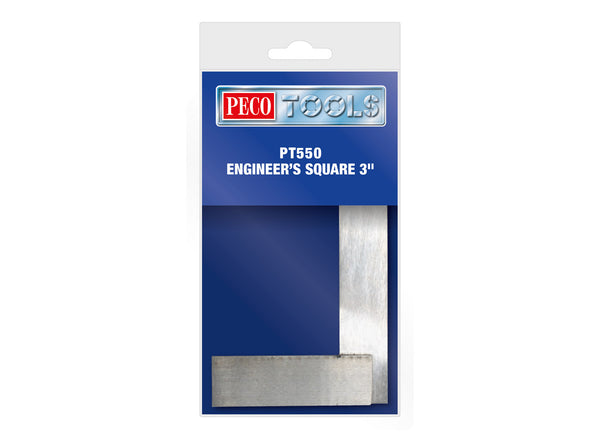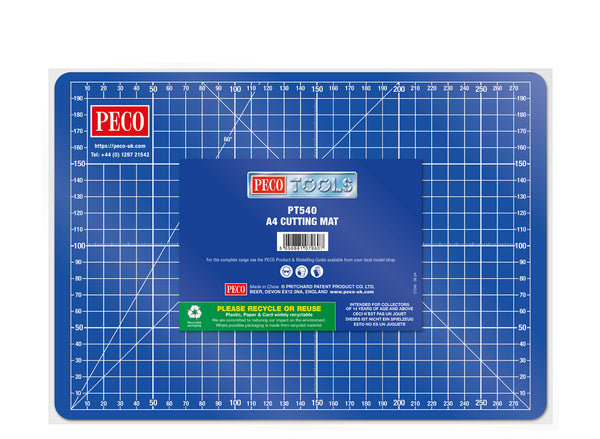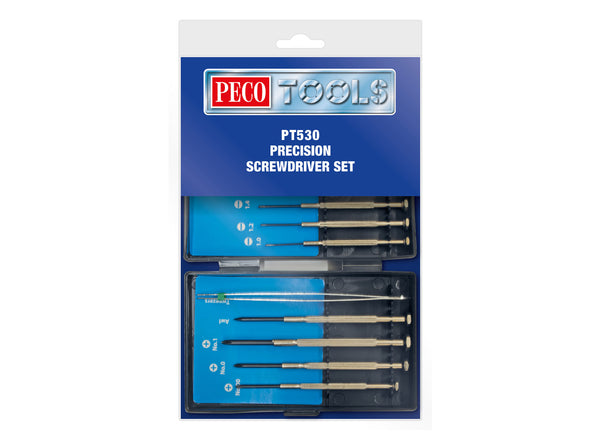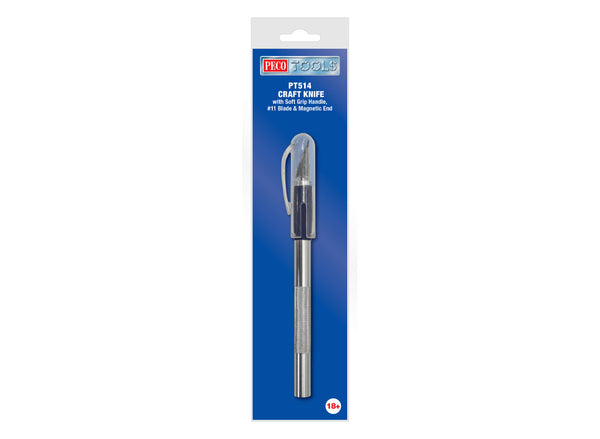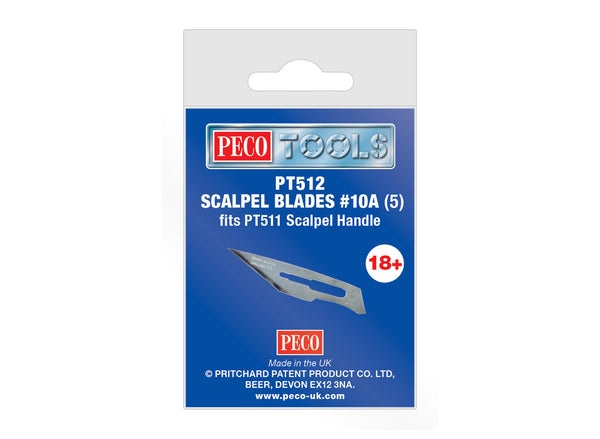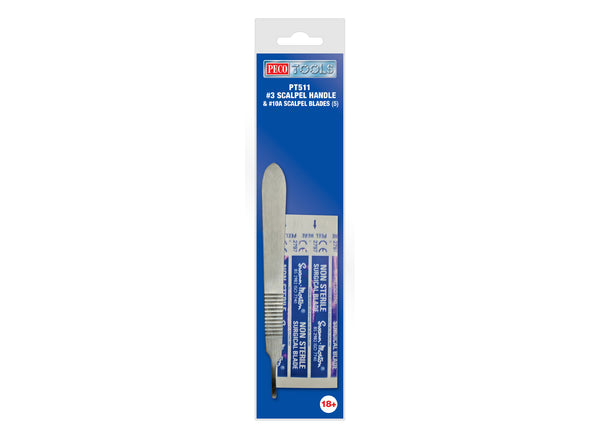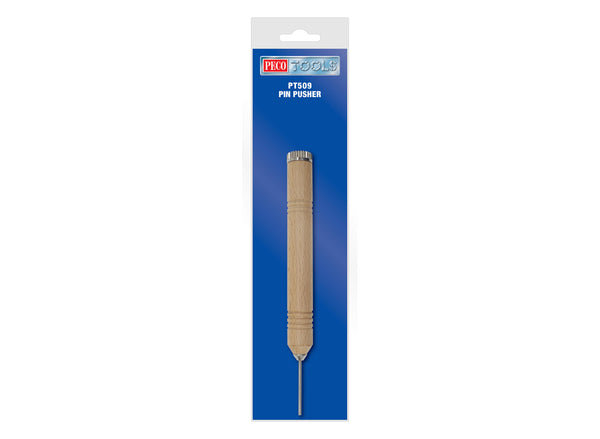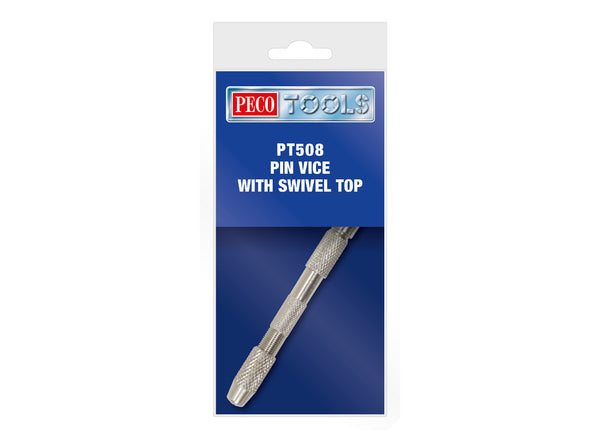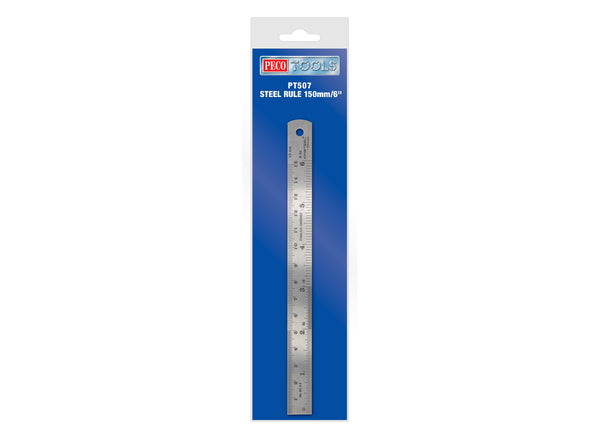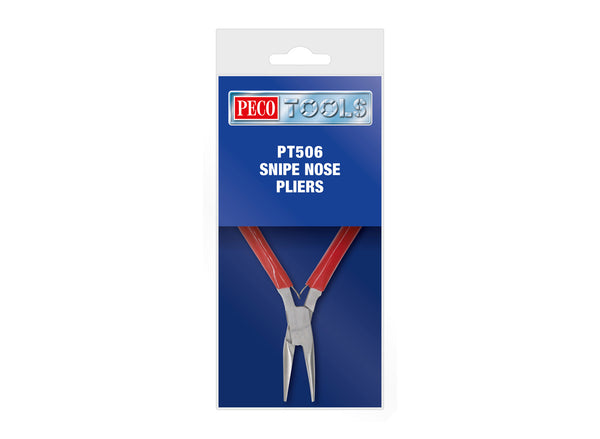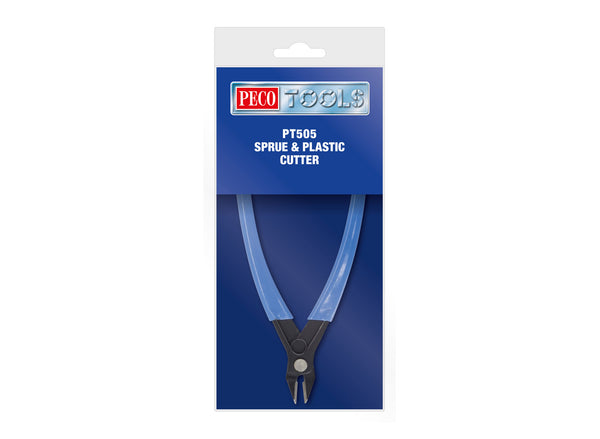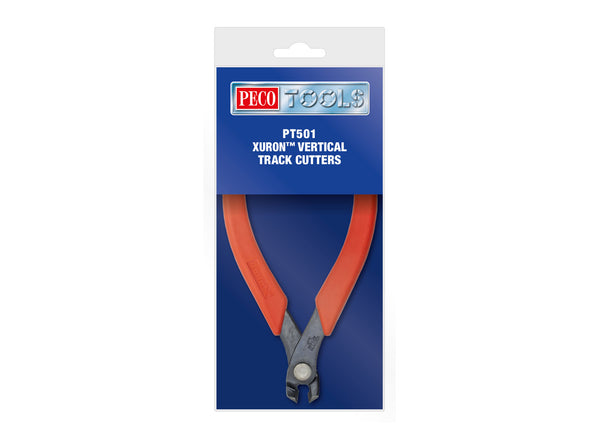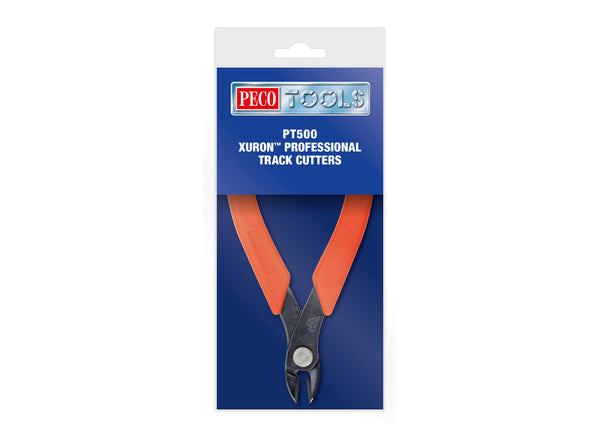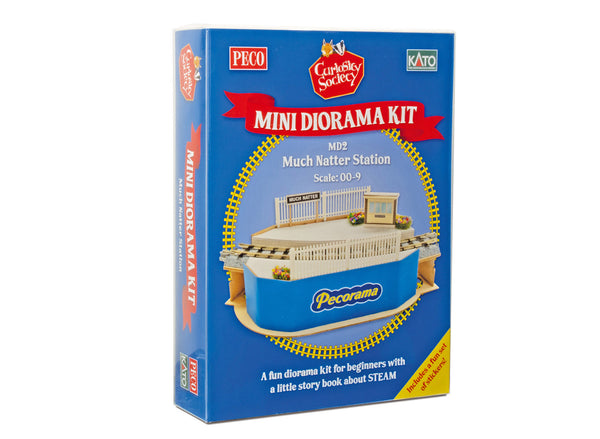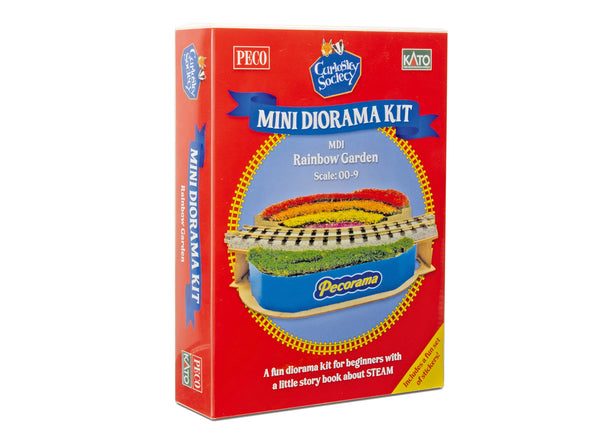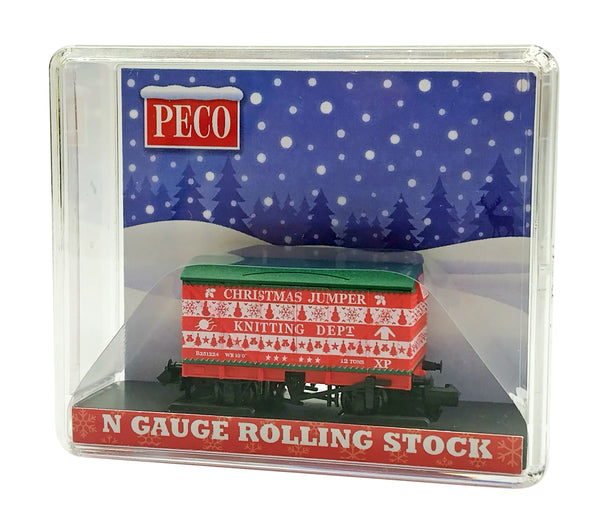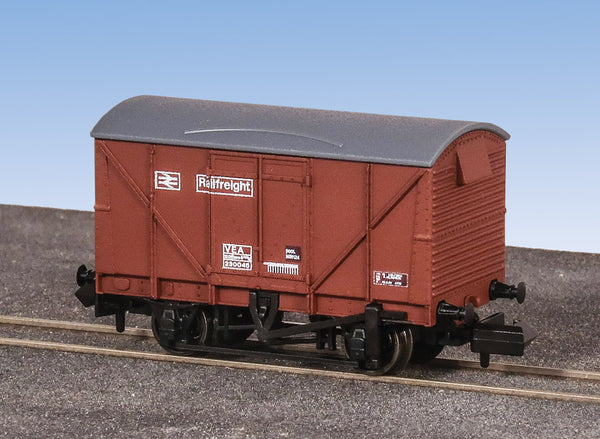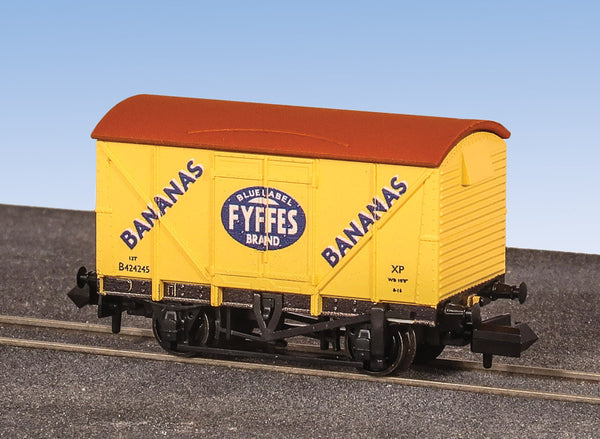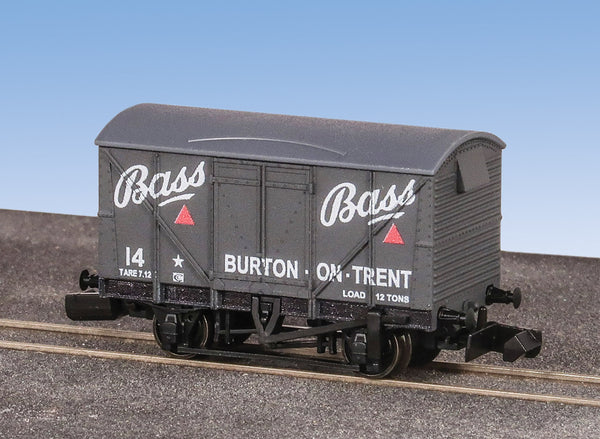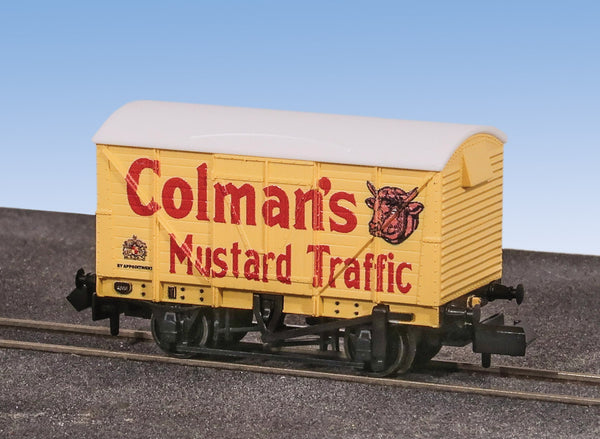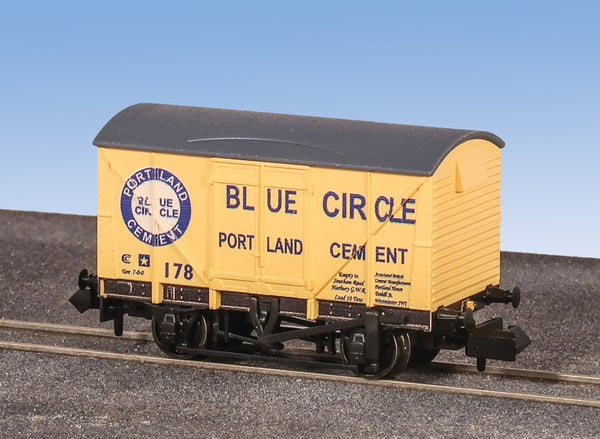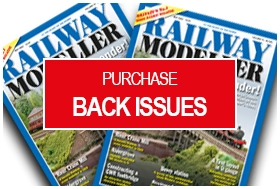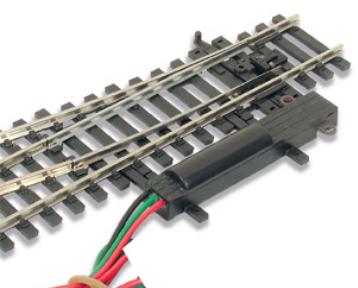DURCHSUCHEN SIE PECO-PRODUKTE
Stöbern Sie durch unser komplettes Produktportfolio.
99 Products Found
Kitbuilder-Werkzeugset
Ein speziell ausgewählter Werkzeugsatz von erfahrenen Modellbauern hier bei PECO für den Bausatzbau. Diese Werkzeuge sind für alle Modellbauer von entscheidender Bedeutung. Dazu gehört auch Expertenwissen in Form eines nützlichen Leitfadens, der Ihnen von den Experten von Railway Modeller zur Verfügung gestellt wird.
Beinhaltet:
- Anguss- und Kunststoffschneider
- Feine Pinzette
- Abbrechmesser mit 10 Ersatzklingen
- Set mit 4 Nadelfeilen
- Pinsel der Größe Nr. 0
- Pinsel der Größe Nr. 4
- A4-Schneidematte
- 150 mm/6 Zoll Stahlmaßstab
- Zeigt Ihnen, wie es geht: „Bausatzbau für Anfänger“
Kitbuilder-Werkzeugset
Ein speziell ausgewählter Werkzeugsatz von erfahrenen Modellbauern hier bei PECO für den Bausatzbau. Diese Werkzeuge sind für alle Modellbauer von entscheidender Bedeutung. Dazu gehört auch Expertenwissen in Form eines nützlichen Leitfadens, der Ihnen von den Experten von Railway Modeller zur Verfügung gestellt wird.
Beinhaltet:
- Anguss- und Kunststoffschneider
- Feine Pinzette
- Abbrechmesser mit 10 Ersatzklingen
- Set mit 4 Nadelfeilen
- Pinsel der Größe Nr. 0
- Pinsel der Größe Nr. 4
- A4-Schneidematte
- 150 mm/6 Zoll Stahlmaßstab
- Zeigt Ihnen, wie es geht: „Bausatzbau für Anfänger“
Kitbuilder-Werkzeugset
Ein speziell ausgewählter Werkzeugsatz von erfahrenen Modellbauern hier bei PECO für den Bausatzbau. Diese Werkzeuge sind für alle Modellbauer von entscheidender Bedeutung. Dazu gehört auch Expertenwissen in Form eines nützlichen Leitfadens, der Ihnen von den Experten von Railway Modeller zur Verfügung gestellt wird.
Beinhaltet:
- Anguss- und Kunststoffschneider
- Feine Pinzette
- Abbrechmesser mit 10 Ersatzklingen
- Set mit 4 Nadelfeilen
- Pinsel der Größe Nr. 0
- Pinsel der Größe Nr. 4
- A4-Schneidematte
- 150 mm/6 Zoll Stahlmaßstab
- Zeigt Ihnen, wie es geht: „Bausatzbau für Anfänger“
Kitbuilder-Werkzeugset
Ein speziell ausgewählter Werkzeugsatz von erfahrenen Modellbauern hier bei PECO für den Bausatzbau. Diese Werkzeuge sind für alle Modellbauer von entscheidender Bedeutung. Dazu gehört auch Expertenwissen in Form eines nützlichen Leitfadens, der Ihnen von den Experten von Railway Modeller zur Verfügung gestellt wird.
Beinhaltet:
- Anguss- und Kunststoffschneider
- Feine Pinzette
- Abbrechmesser mit 10 Ersatzklingen
- Set mit 4 Nadelfeilen
- Pinsel der Größe Nr. 0
- Pinsel der Größe Nr. 4
- A4-Schneidematte
- 150 mm/6 Zoll Stahlmaßstab
- Zeigt Ihnen, wie es geht: „Bausatzbau für Anfänger“
Kitbuilder-Werkzeugset
Ein speziell ausgewählter Werkzeugsatz von erfahrenen Modellbauern hier bei PECO für den Bausatzbau. Diese Werkzeuge sind für alle Modellbauer von entscheidender Bedeutung. Dazu gehört auch Expertenwissen in Form eines nützlichen Leitfadens, der Ihnen von den Experten von Railway Modeller zur Verfügung gestellt wird.
Beinhaltet:
- Anguss- und Kunststoffschneider
- Feine Pinzette
- Abbrechmesser mit 10 Ersatzklingen
- Set mit 4 Nadelfeilen
- Pinsel der Größe Nr. 0
- Pinsel der Größe Nr. 4
- A4-Schneidematte
- 150 mm/6 Zoll Stahlmaßstab
- Zeigt Ihnen, wie es geht: „Bausatzbau für Anfänger“
Kitbuilder-Werkzeugset
Ein speziell ausgewählter Werkzeugsatz von erfahrenen Modellbauern hier bei PECO für den Bausatzbau. Diese Werkzeuge sind für alle Modellbauer von entscheidender Bedeutung. Dazu gehört auch Expertenwissen in Form eines nützlichen Leitfadens, der Ihnen von den Experten von Railway Modeller zur Verfügung gestellt wird.
Beinhaltet:
- Anguss- und Kunststoffschneider
- Feine Pinzette
- Abbrechmesser mit 10 Ersatzklingen
- Set mit 4 Nadelfeilen
- Pinsel der Größe Nr. 0
- Pinsel der Größe Nr. 4
- A4-Schneidematte
- 150 mm/6 Zoll Stahlmaßstab
- Zeigt Ihnen, wie es geht: „Bausatzbau für Anfänger“
Kitbuilder-Werkzeugset
Ein speziell ausgewählter Werkzeugsatz von erfahrenen Modellbauern hier bei PECO für den Bausatzbau. Diese Werkzeuge sind für alle Modellbauer von entscheidender Bedeutung. Dazu gehört auch Expertenwissen in Form eines nützlichen Leitfadens, der Ihnen von den Experten von Railway Modeller zur Verfügung gestellt wird.
Beinhaltet:
- Anguss- und Kunststoffschneider
- Feine Pinzette
- Abbrechmesser mit 10 Ersatzklingen
- Set mit 4 Nadelfeilen
- Pinsel der Größe Nr. 0
- Pinsel der Größe Nr. 4
- A4-Schneidematte
- 150 mm/6 Zoll Stahlmaßstab
- Zeigt Ihnen, wie es geht: „Bausatzbau für Anfänger“
Kitbuilder-Werkzeugset
Ein speziell ausgewählter Werkzeugsatz von erfahrenen Modellbauern hier bei PECO für den Bausatzbau. Diese Werkzeuge sind für alle Modellbauer von entscheidender Bedeutung. Dazu gehört auch Expertenwissen in Form eines nützlichen Leitfadens, der Ihnen von den Experten von Railway Modeller zur Verfügung gestellt wird.
Beinhaltet:
- Anguss- und Kunststoffschneider
- Feine Pinzette
- Abbrechmesser mit 10 Ersatzklingen
- Set mit 4 Nadelfeilen
- Pinsel der Größe Nr. 0
- Pinsel der Größe Nr. 4
- A4-Schneidematte
- 150 mm/6 Zoll Stahlmaßstab
- Zeigt Ihnen, wie es geht: „Bausatzbau für Anfänger“
Kitbuilder-Werkzeugset
Ein speziell ausgewählter Werkzeugsatz von erfahrenen Modellbauern hier bei PECO für den Bausatzbau. Diese Werkzeuge sind für alle Modellbauer von entscheidender Bedeutung. Dazu gehört auch Expertenwissen in Form eines nützlichen Leitfadens, der Ihnen von den Experten von Railway Modeller zur Verfügung gestellt wird.
Beinhaltet:
- Anguss- und Kunststoffschneider
- Feine Pinzette
- Abbrechmesser mit 10 Ersatzklingen
- Set mit 4 Nadelfeilen
- Pinsel der Größe Nr. 0
- Pinsel der Größe Nr. 4
- A4-Schneidematte
- 150 mm/6 Zoll Stahlmaßstab
- Zeigt Ihnen, wie es geht: „Bausatzbau für Anfänger“
Kitbuilder-Werkzeugset
Ein speziell ausgewählter Werkzeugsatz von erfahrenen Modellbauern hier bei PECO für den Bausatzbau. Diese Werkzeuge sind für alle Modellbauer von entscheidender Bedeutung. Dazu gehört auch Expertenwissen in Form eines nützlichen Leitfadens, der Ihnen von den Experten von Railway Modeller zur Verfügung gestellt wird.
Beinhaltet:
- Anguss- und Kunststoffschneider
- Feine Pinzette
- Abbrechmesser mit 10 Ersatzklingen
- Set mit 4 Nadelfeilen
- Pinsel der Größe Nr. 0
- Pinsel der Größe Nr. 4
- A4-Schneidematte
- 150 mm/6 Zoll Stahlmaßstab
- Zeigt Ihnen, wie es geht: „Bausatzbau für Anfänger“
Kitbuilder-Werkzeugset
Ein speziell ausgewählter Werkzeugsatz von erfahrenen Modellbauern hier bei PECO für den Bausatzbau. Diese Werkzeuge sind für alle Modellbauer von entscheidender Bedeutung. Dazu gehört auch Expertenwissen in Form eines nützlichen Leitfadens, der Ihnen von den Experten von Railway Modeller zur Verfügung gestellt wird.
Beinhaltet:
- Anguss- und Kunststoffschneider
- Feine Pinzette
- Abbrechmesser mit 10 Ersatzklingen
- Set mit 4 Nadelfeilen
- Pinsel der Größe Nr. 0
- Pinsel der Größe Nr. 4
- A4-Schneidematte
- 150 mm/6 Zoll Stahlmaßstab
- Zeigt Ihnen, wie es geht: „Bausatzbau für Anfänger“
Kitbuilder-Werkzeugset
Ein speziell ausgewählter Werkzeugsatz von erfahrenen Modellbauern hier bei PECO für den Bausatzbau. Diese Werkzeuge sind für alle Modellbauer von entscheidender Bedeutung. Dazu gehört auch Expertenwissen in Form eines nützlichen Leitfadens, der Ihnen von den Experten von Railway Modeller zur Verfügung gestellt wird.
Beinhaltet:
- Anguss- und Kunststoffschneider
- Feine Pinzette
- Abbrechmesser mit 10 Ersatzklingen
- Set mit 4 Nadelfeilen
- Pinsel der Größe Nr. 0
- Pinsel der Größe Nr. 4
- A4-Schneidematte
- 150 mm/6 Zoll Stahlmaßstab
- Zeigt Ihnen, wie es geht: „Bausatzbau für Anfänger“
Kitbuilder-Werkzeugset
Ein speziell ausgewählter Werkzeugsatz von erfahrenen Modellbauern hier bei PECO für den Bausatzbau. Diese Werkzeuge sind für alle Modellbauer von entscheidender Bedeutung. Dazu gehört auch Expertenwissen in Form eines nützlichen Leitfadens, der Ihnen von den Experten von Railway Modeller zur Verfügung gestellt wird.
Beinhaltet:
- Anguss- und Kunststoffschneider
- Feine Pinzette
- Abbrechmesser mit 10 Ersatzklingen
- Set mit 4 Nadelfeilen
- Pinsel der Größe Nr. 0
- Pinsel der Größe Nr. 4
- A4-Schneidematte
- 150 mm/6 Zoll Stahlmaßstab
- Zeigt Ihnen, wie es geht: „Bausatzbau für Anfänger“
Kitbuilder-Werkzeugset
Ein speziell ausgewählter Werkzeugsatz von erfahrenen Modellbauern hier bei PECO für den Bausatzbau. Diese Werkzeuge sind für alle Modellbauer von entscheidender Bedeutung. Dazu gehört auch Expertenwissen in Form eines nützlichen Leitfadens, der Ihnen von den Experten von Railway Modeller zur Verfügung gestellt wird.
Beinhaltet:
- Anguss- und Kunststoffschneider
- Feine Pinzette
- Abbrechmesser mit 10 Ersatzklingen
- Set mit 4 Nadelfeilen
- Pinsel der Größe Nr. 0
- Pinsel der Größe Nr. 4
- A4-Schneidematte
- 150 mm/6 Zoll Stahlmaßstab
- Zeigt Ihnen, wie es geht: „Bausatzbau für Anfänger“
Kitbuilder-Werkzeugset
Ein speziell ausgewählter Werkzeugsatz von erfahrenen Modellbauern hier bei PECO für den Bausatzbau. Diese Werkzeuge sind für alle Modellbauer von entscheidender Bedeutung. Dazu gehört auch Expertenwissen in Form eines nützlichen Leitfadens, der Ihnen von den Experten von Railway Modeller zur Verfügung gestellt wird.
Beinhaltet:
- Anguss- und Kunststoffschneider
- Feine Pinzette
- Abbrechmesser mit 10 Ersatzklingen
- Set mit 4 Nadelfeilen
- Pinsel der Größe Nr. 0
- Pinsel der Größe Nr. 4
- A4-Schneidematte
- 150 mm/6 Zoll Stahlmaßstab
- Zeigt Ihnen, wie es geht: „Bausatzbau für Anfänger“
Kitbuilder-Werkzeugset
Ein speziell ausgewählter Werkzeugsatz von erfahrenen Modellbauern hier bei PECO für den Bausatzbau. Diese Werkzeuge sind für alle Modellbauer von entscheidender Bedeutung. Dazu gehört auch Expertenwissen in Form eines nützlichen Leitfadens, der Ihnen von den Experten von Railway Modeller zur Verfügung gestellt wird.
Beinhaltet:
- Anguss- und Kunststoffschneider
- Feine Pinzette
- Abbrechmesser mit 10 Ersatzklingen
- Set mit 4 Nadelfeilen
- Pinsel der Größe Nr. 0
- Pinsel der Größe Nr. 4
- A4-Schneidematte
- 150 mm/6 Zoll Stahlmaßstab
- Zeigt Ihnen, wie es geht: „Bausatzbau für Anfänger“
GWR-Bahnhofsgebäude aus Holz (Monkton Combe)
Monkton Combe, einst eine Zwischenstation der lange geschlossenen Camerton-Filiale in der Nähe von Bath, rückte 1952 ins Rampenlicht, als es als Drehort für die berühmte Ealing-Komödie „The Titfield Thunderbolt“ ausgewählt wurde.
GWR-Bahnhofsgebäude aus Holz (Monkton Combe)
Monkton Combe, einst eine Zwischenstation der lange geschlossenen Camerton-Filiale in der Nähe von Bath, rückte 1952 ins Rampenlicht, als es als Drehort für die berühmte Ealing-Komödie „The Titfield Thunderbolt“ ausgewählt wurde.
N Gauge 'Christmas Jumper Dept' Vanfit
Ganzzüge mit Spezialladungen sind ein Merkmal der modernen Eisenbahn. Alle Peco-Wagen verfügen über freilaufende Räder mit Steckachsen. Die ELC-Kupplung ist zwar mit den standardmäßigen N-Spur-Kupplungen kompatibel, hält jedoch einen realistischen Abstand zwischen Fahrzeugen und ermöglicht die Verwendung des elektromagnetischen Entkopplers PL-25 zum Fernentkuppeln.
BR Vanfit Wagon - Freight
Ganzzüge mit Spezialladungen sind ein Merkmal der modernen Eisenbahn. Alle Peco-Wagen verfügen über freilaufende Räder mit Steckachsen. Die ELC-Kupplung ist zwar mit den standardmäßigen N-Spur-Kupplungen kompatibel, hält jedoch einen realistischen Abstand zwischen Fahrzeugen und ermöglicht die Verwendung des elektromagnetischen Entkopplers PL-25 zum Fernentkuppeln.
BR Vanfit Wagon - Fyffes Bananas
Ganzzüge mit Spezialladungen sind ein Merkmal der modernen Eisenbahn. Alle Peco-Wagen verfügen über freilaufende Räder mit Steckachsen. Die ELC-Kupplung ist zwar mit den standardmäßigen N-Spur-Kupplungen kompatibel, hält jedoch einen realistischen Abstand zwischen Fahrzeugen und ermöglicht die Verwendung des elektromagnetischen Entkopplers PL-25 zum Fernentkuppeln.
BR Vanfit Wagon - Bass Brewery
Ganzzüge mit Spezialladungen sind ein Merkmal der modernen Eisenbahn. Alle Peco-Wagen verfügen über freilaufende Räder mit Steckachsen. Die ELC-Kupplung ist zwar mit den standardmäßigen N-Spur-Kupplungen kompatibel, hält jedoch einen realistischen Abstand zwischen Fahrzeugen und ermöglicht die Verwendung des elektromagnetischen Entkopplers PL-25 zum Fernentkuppeln.
BR Vanfit Wagon - Colman's Mustard
Ganzzüge mit Spezialladungen sind ein Merkmal der modernen Eisenbahn. Alle Peco-Wagen verfügen über freilaufende Räder mit Steckachsen. Die ELC-Kupplung ist zwar mit den standardmäßigen N-Spur-Kupplungen kompatibel, hält jedoch einen realistischen Abstand zwischen Fahrzeugen und ermöglicht die Verwendung des elektromagnetischen Entkopplers PL-25 zum Fernentkuppeln.
BR Vanfit Wagon - Blue Circle Cement
Ganzzüge mit Spezialladungen sind ein Merkmal der modernen Eisenbahn. Alle Peco-Wagen verfügen über freilaufende Räder mit Steckachsen. Die ELC-Kupplung ist zwar mit den standardmäßigen N-Spur-Kupplungen kompatibel, hält jedoch einen realistischen Abstand zwischen Fahrzeugen und ermöglicht die Verwendung des elektromagnetischen Entkopplers PL-25 zum Fernentkuppeln.


